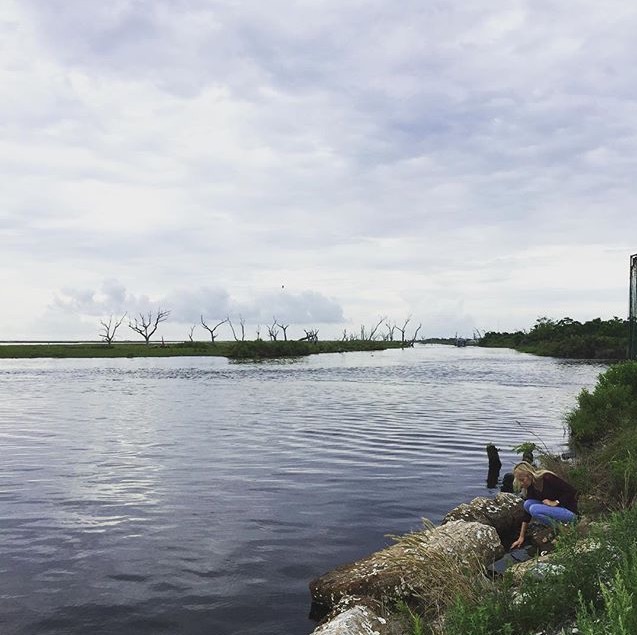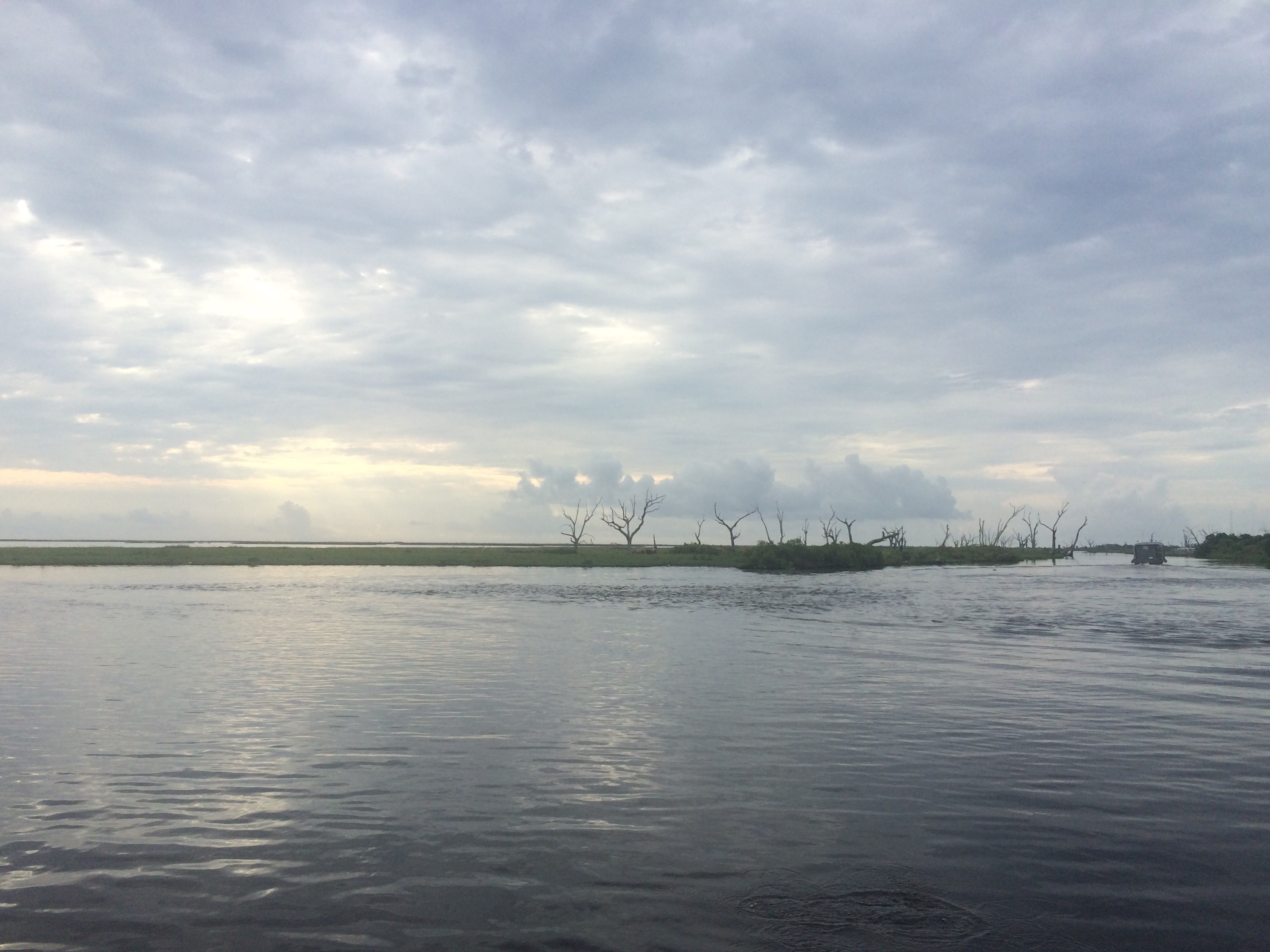
As you drive down the bayou towards the Pointe-au-Chien Indian Tribal Building, you can watch storms brewing over the encroaching Gulf of Mexico, sending ribbons of wind over waving marsh grasses and through the looping ropes that drape shrimp boats out on the water. Inside the Tribal Building, my research partner and I unfold history as afternoon rain drums on the roof overhead. Outside below our feet, chickens poke through the grass growing up in the shade among the stilts that elevate the Tribal Building above flood level. From the windows we can see marshy islands, sea birds hovering in warm, humid air, and the glitter of the persistent southern sun over an ever-growing expanse of water.
Here, we are working on the Pointe-au-Chien Indian Tribe’s (PACIT) application for federal acknowledgment, a process that requires the presentation of an incredible wealth of information to the Bureau of Indian Affairs with the ultimate goal of affirming PACIT as a federally recognized Indian Tribe. In the past two weeks, we have been honored with access to file boxes full of a treasure of information on the tribe’s ancestry, genealogy, relationships, culture, traditions, and ties to their land. Each folder we pull out from the boxes has a surprise piece of history inside. We analyze each piece for content and relevance, learn from it, and figure out its place in the puzzle of the PACIT’s story. We have also spent time in the archives at Nicholls State University, finding puzzle pieces that have been scattered across time and space. Unlike the boxes and files in the Tribal Building, they contain pieces of thousands of other stories, making each piece of paper that mentions anything relating to the PACIT a jewel. As we go, we are collecting these gems and helping to put together a picture of a unique community.
I didn’t know it, but I had started on course for this internship the summer after I graduated from high school. As I sweated in my first round of Louisiana heat while picking out the classes I would take during the first semester of my freshman year, I scrolled through pages of course offerings for Tulane Inter-Disciplinary Experience Seminars (TIDES) classes. The classes are taken only by freshmen students and are designed to help make connections with fellow students with similar interests, and there are over eighty topics to choose from. After what felt like endless deliberation, I settled on a course called Indian Tribes on the Bayou—it was completely outside what I thought were the boundaries of my interests, but something about it really drew me in. When I started school in the fall, I found this class quickly becoming the academic high point of my week. The end of the class came much faster than I anticipated, and I was left with an almost breathless feeling of not having gone deep enough into what I felt I could learn. I reached out to my professor and we kept in contact throughout the rest of the year. When this internship position became available, my professor recommended me for it, and I am now spending this summer exploring more of what makes me excited to learn.

The best advice I could pass along, especially to first year students, is to throw out what you think of the “boundaries” of your interests, especially as. If something interests you—be it a class, an experience, an idea, a place, anything—dig into it, even if it’s outside the prescribed list of classes for your educational track or major. Especially then. Pay attention to what you find yourself not being able to stop talking about, to what stops feeling like studying and what starts feeling like exploring. One of the best things I have ever experienced is the excitement of learning, and it has always happened for me when I have asked myself, “Well, what if…?” You never know where your passions will take you—mine led me to an incredible internship within an incredible community.
In my first week, I have learned how to navigate unfamiliar highways, the importance of finding shady parking spots, how to request archival records, and how to crack open a crab shell. I have learned how to read a family tree, how to interpret heavy Cajun French accents, and how to be creative with history. I expect in the next few weeks to learn deeply, but I can’t say what I’ll learn about. Each piece of paper I pull from a file is different from the last, each person to walk into the Tribal Building has a different story to tell, and each day teaches me something new. I’m excited to explore my capacity to learn and help put pieces together for the PACIT and their application for federal recognition, starting with the adventure of my third week of work.
